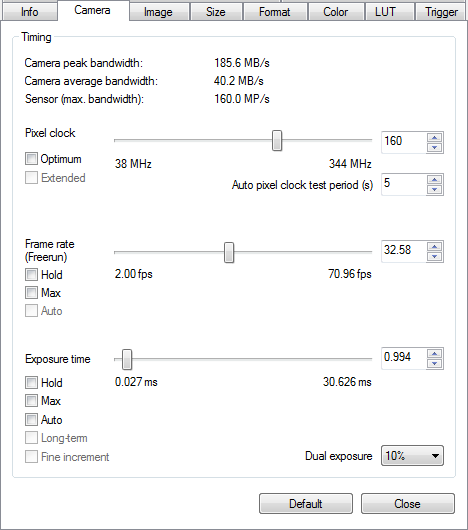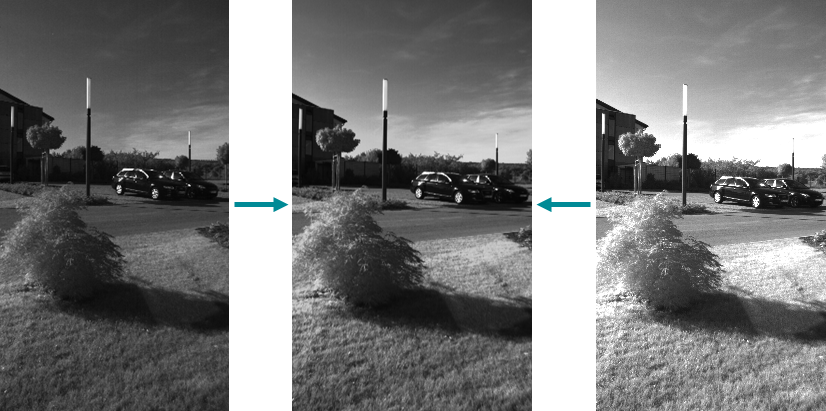IDS Software Suite 4.96.1
|
The Interleave HDR is only supported by the camera models UI-336x/UI-536x and UI-337x/UI-537x. |
With Interleave HDR, different exposure times are used for different pixels in a picture. For example, on monochrome models lines 1, 3, 5, etc. are exposed using the full exposure time, while lines 2, 4, 6, etc. use a reduced exposure time. On color models, lines 1, 2, 5, 6, etc. are exposed using the full exposure time and lines 3, 4, 7, 8, etc. using the reduced exposure time. This results in the two images having a vertically halved resolution. You can use external image processing programs to combine the images into an HDR picture.
To set up Interleave HDR proceed as follows:
•In uEye Cockpit, go to Properties and open the "Camera" tab.
•Under the exposure time, select in the "Dual exposure" field the reduced exposure time as a percentage of the full exposure time.

Fig. 53: Setting a dual exposure
Example: If you set a full exposure time of 1 ms and then select 10 % under "Dual exposure", the shorter exposure is taken using 0.1 ms.
When you enable dual exposure, you will automatically see two images in the uEye Cockpit. The upper image is produced with the full exposure time and the lower image with the reduced exposure time. Because these images are each only half the height, they appear blurred. You can enable horizontal sub-sampling with a factor of 2x (see "Size" tab) to set the correct aspect ratio for the individual images. A graphics program can be used to stretch and geographically correlate the images and combine them into an HDR image by tone mapping.

Fig. 54: Example of Interleave HDR
